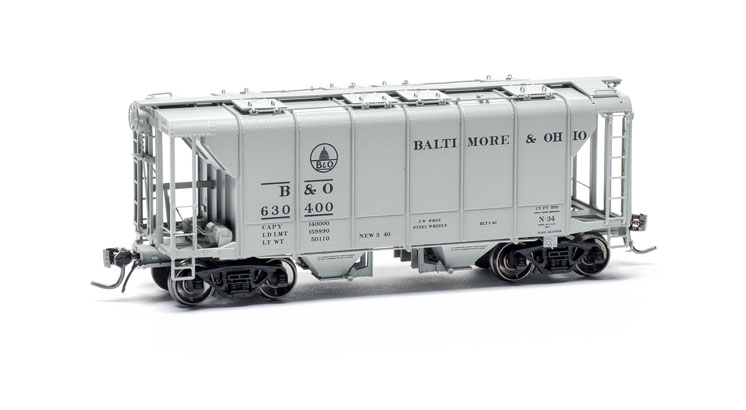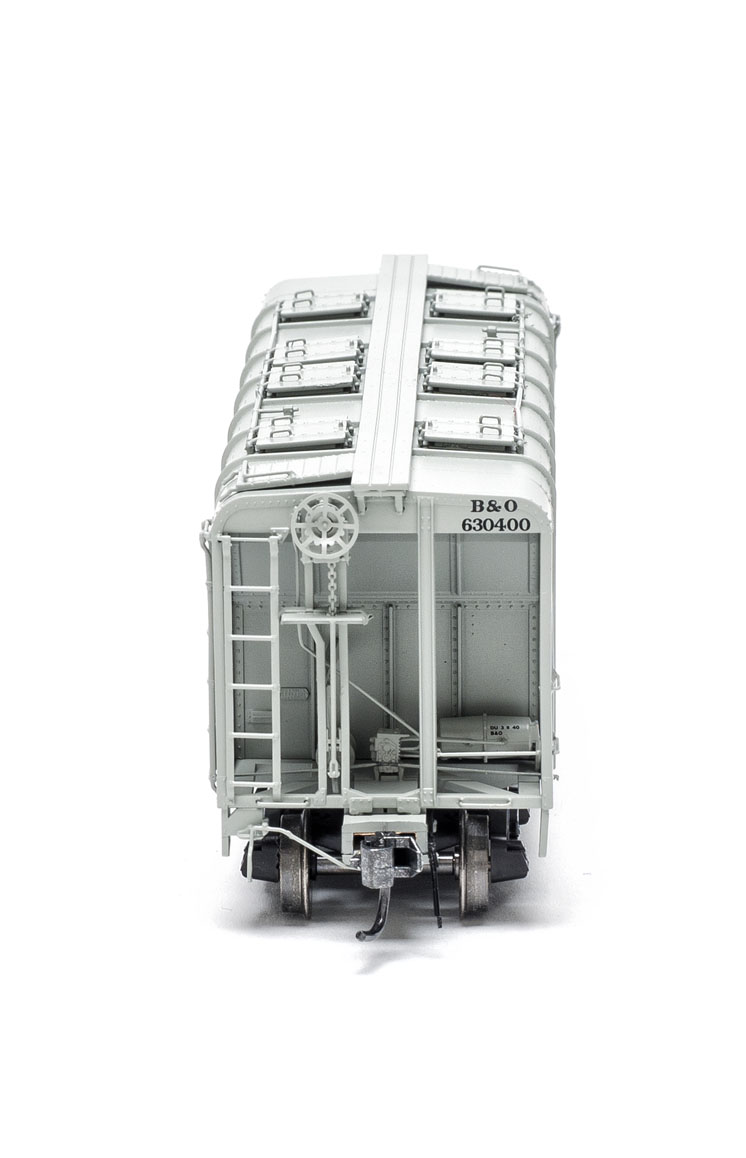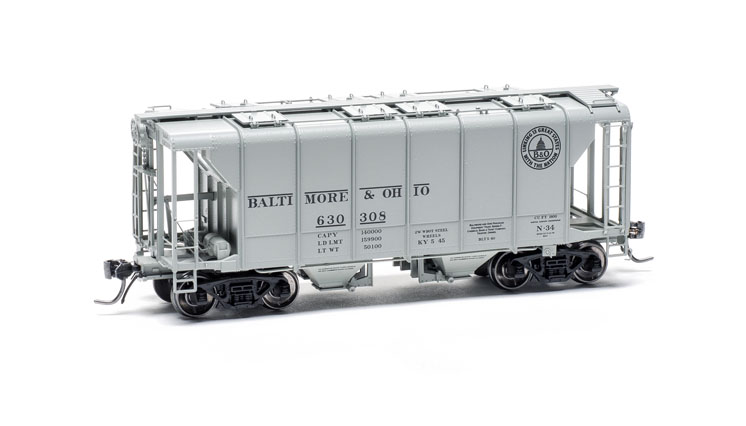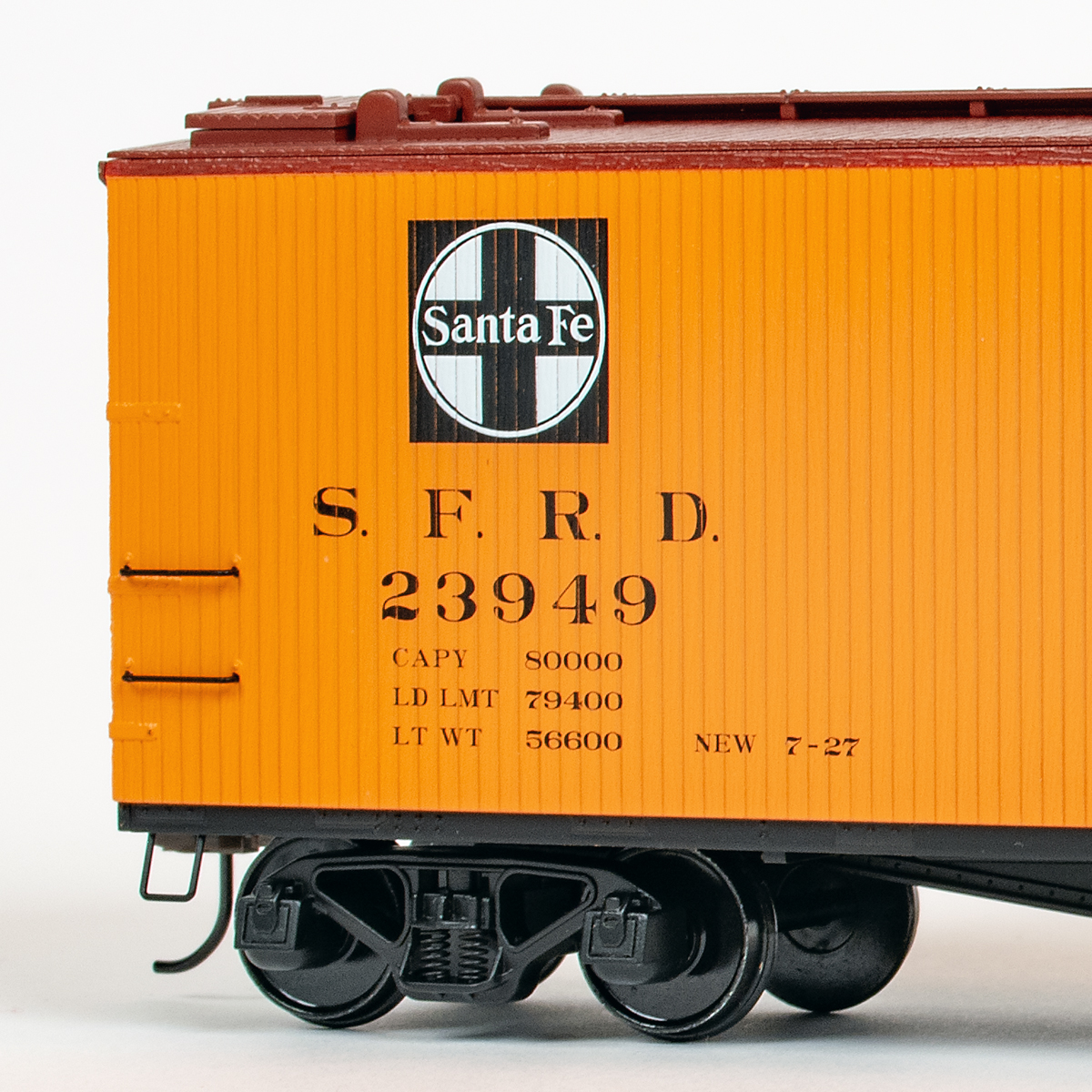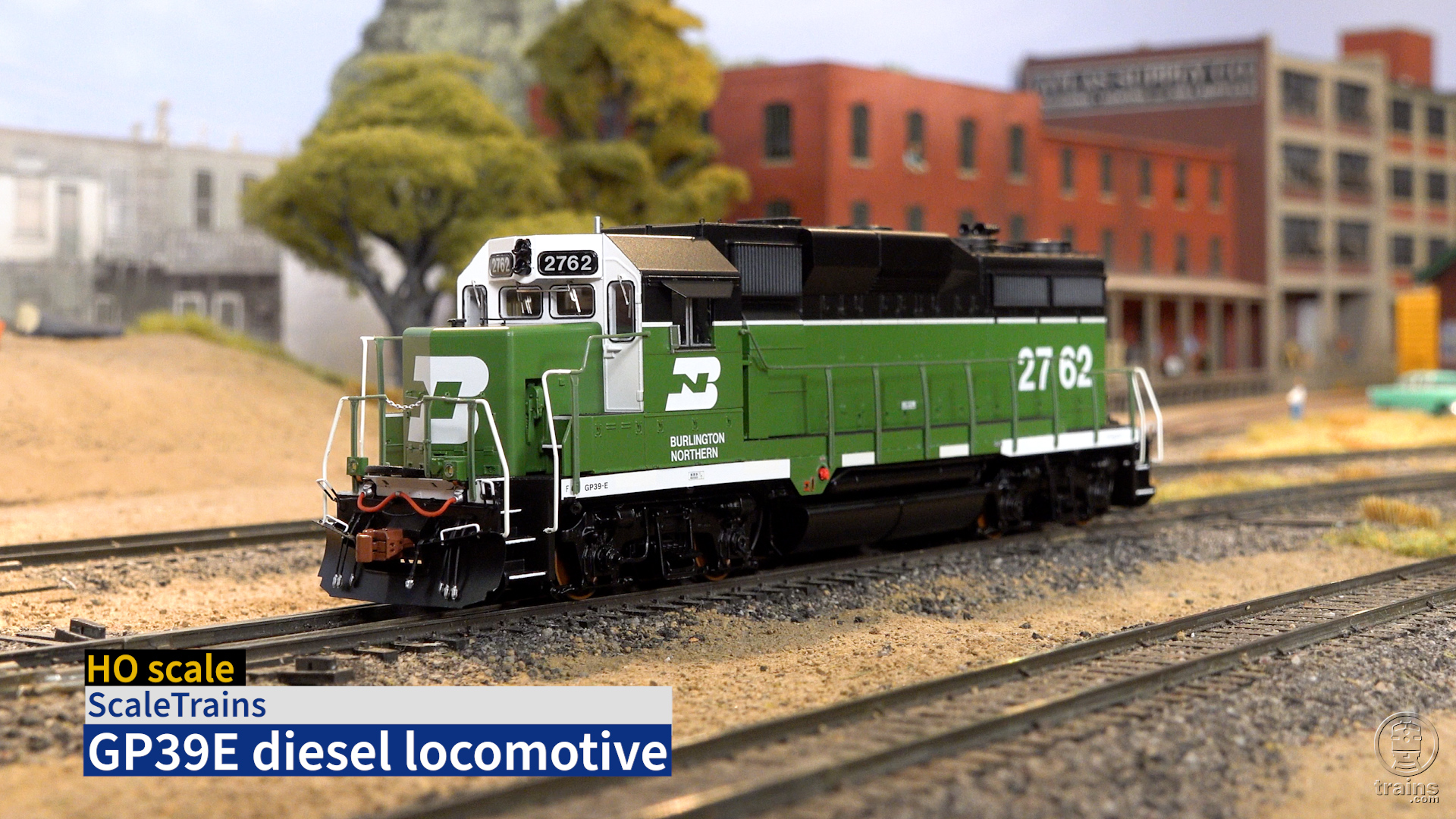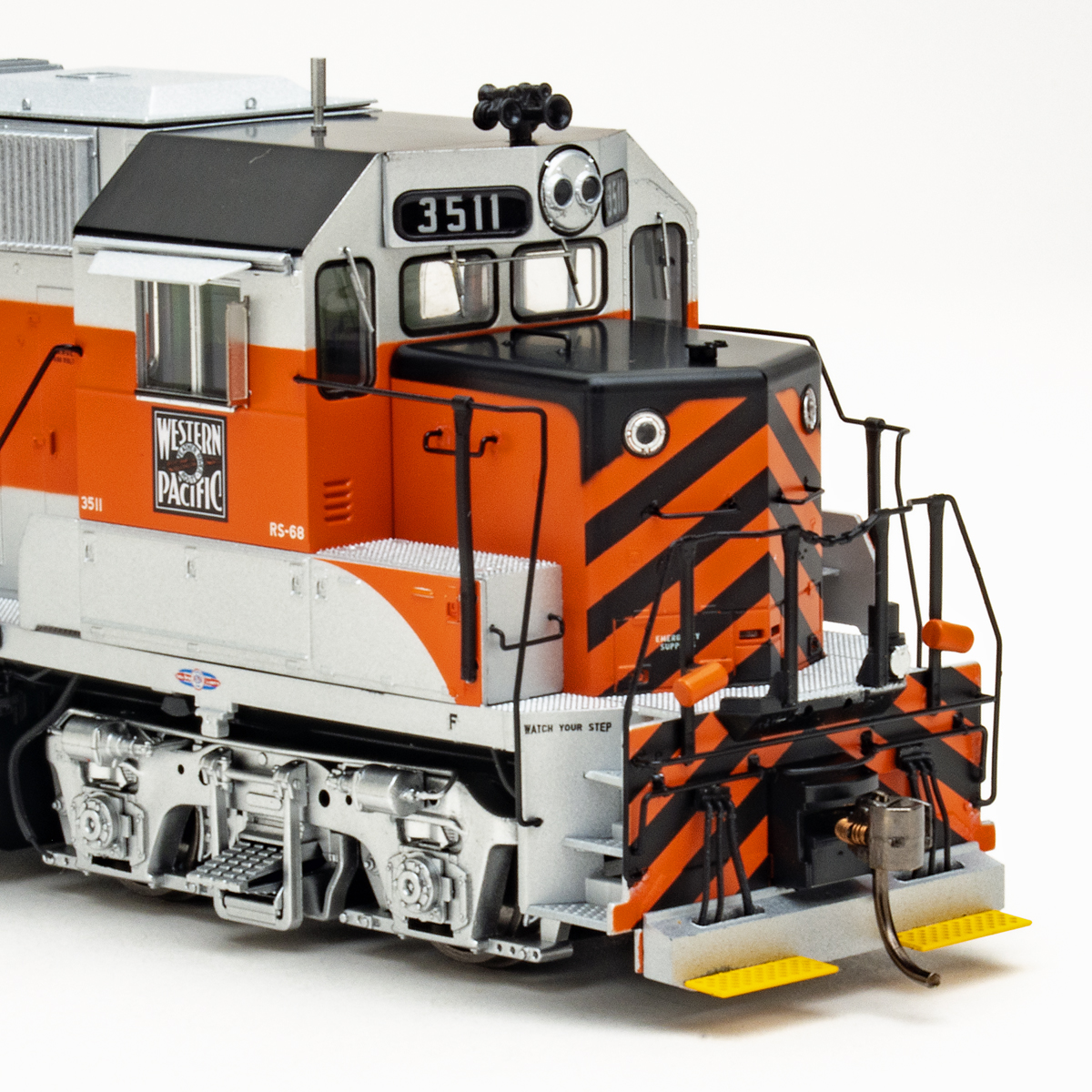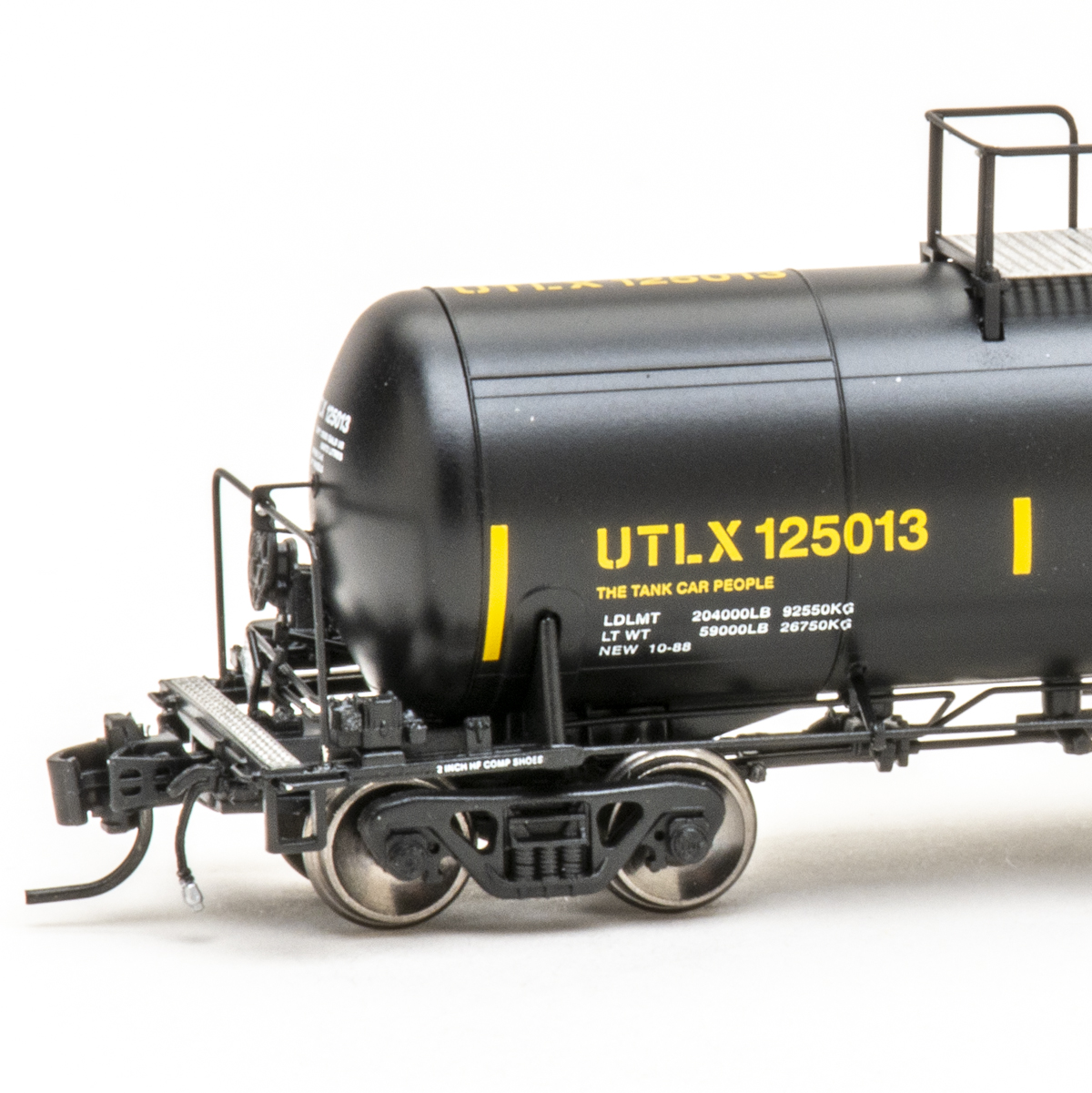The Baltimore & Ohio wagontop hoppers are rounded up and heading out. These transition-era covered hoppers are now available from Spring Mills Depot.
The B&O built a series of wagontop cars between the world wars. These home-built cars had at least two purposes: keep the shops busy during the Great Depression, and solve the problem of water infiltration on house cars. In addition to the class N-34 covered hoppers, the B&O also built cabooses and boxcars using similar construction techniques.
The covered hoppers were built in two lots of 100. The first batch, numbered 630400 to 630499, were built in the railroad’s DuBois, Pa., shops in April 1940. The second batch, numbered 630300 to 630399, were built in B&O’s Keyser, W.Va., shops in June 1940.
Records show most of the cars still in service at the end of the 1950s, and two cars, numbers 630354 and 630474, show up in the January 1974 issue of The Official Railroad Equipment Register. None were listed in January 1975.
The cars were mostly used in cement service, but they also carried soda ash and clay for B&O customers. In the 1950s, some cars were labeled with a “G” in front of the road number to indicate they were suitable for glass sand loading.
The plastic body shell on Spring Mills Depot’s covered hopper is finely molded. The truck design matches photos in the June 15, 1940 Railway Age magazine. Foundry markings indicating journal size and manufacturer are all legible and match published information.
All dimensions were within inches of measurements published in the same Railway Age magazine. The gray paint is evenly applied, and the lettering is all clear and legible, including the information on the brake cylinder and hopper bottoms. Spring Mills Depot even paid attention to the ampersand in the B&O herald – open on the first cars (pictured above) and closed on the later repaints.
The car weighs 3.8 ounces, about 1⁄2 ounce too heavy for a 41⁄2″-long car.
I tested the hopper on our Beer Line project layout and had no trouble pushing or pulling it through 18″ radius curves and Atlas Snap-Switches.
Modelers interested in the transition era of post-World War II through the beginning of the diesel era’s second generation in the mid-1960s could find a place for this car on their layouts. Although their assignments were concentrated in the Midwest, B&O shippers could have sent their products across the country. This is another well-done model from Spring Mills Depot.
Price: $54.95
Manufacturer
Spring Mills Depot
P.O. Box 1616
Spring Mills, MD 21158
www.springmillsdepot.com
Era: mid-1940 to 1974
Paint schemes: early-late 1940 transition Kuhler; late 1940-mid 1945 wartime Kuhler; 1945-1946 early 13 Great States; 1953-1955 early billboard; 1956-1957 mid-1950s billboard; 1957-1962 late 1950s billboard; unassembled, undecorated kit
Features
▪▪Blackened metal wheelsets, in gauge
▪▪Kadee knuckle couplers, mounted at correct height
▪▪Separately applied grab irons and ladders
▪▪Slack adjuster as appropriate
▪▪Weight: 3.8 ounces (.55 ounces too heavy according to National Model Railroad Association Recommended Practice 20.1)





